Why do dogs shake their toys and is it normal behavior?
Why do dogs shake their toys? We wanted to know too, so we spoke to a vet to find out why and what you can do if you want to stop it.
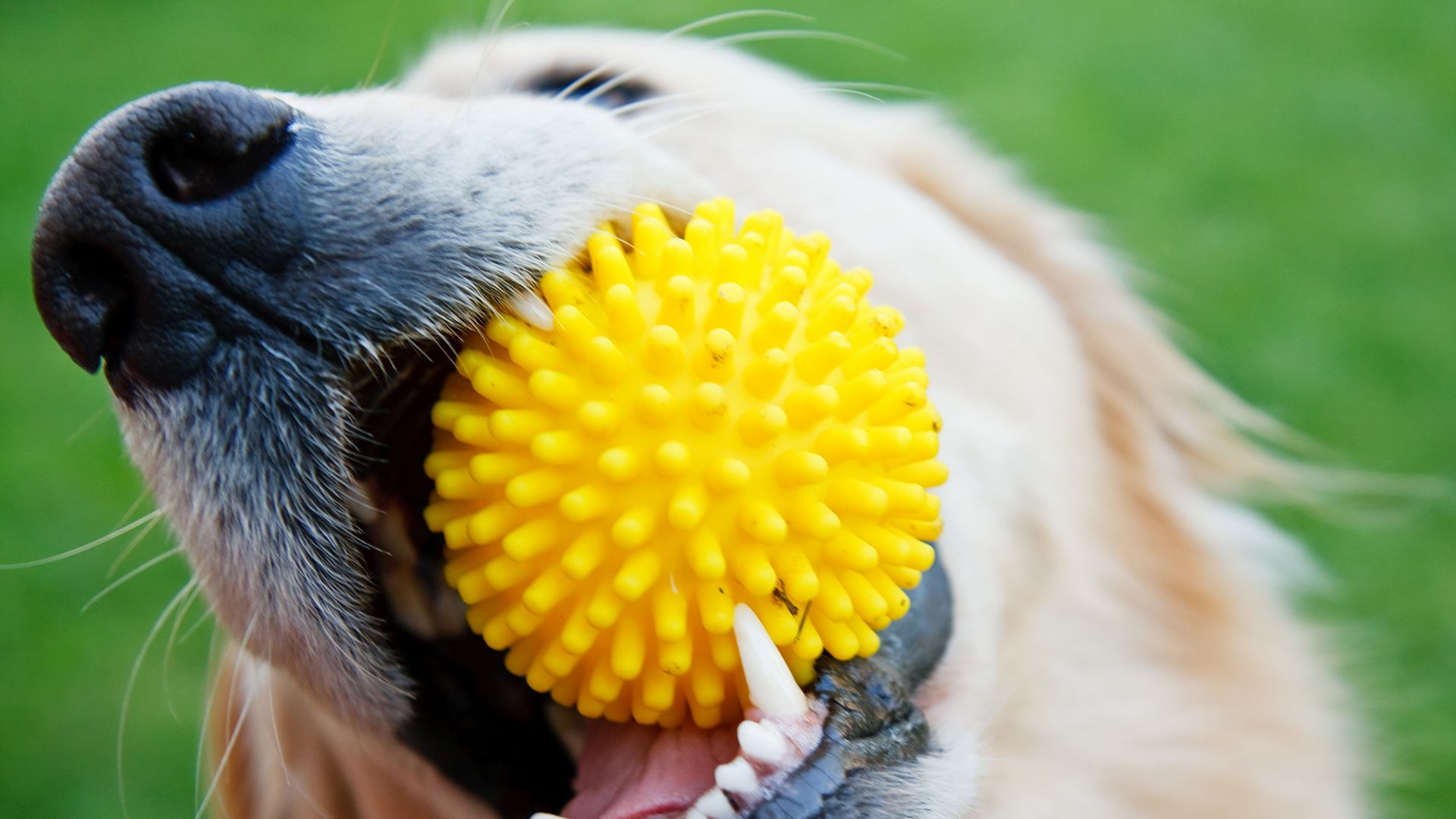
Want to know why dogs shake their toys? Us, too. We spoke to vet, Dr. Joanna Woodnutt and found everything you need to know about this behavior.
You may be relieved to know that this is a fairly common behavior and generally nothing to worry about. It is more prevalent in puppies but you see this in older dogs as well.
While this is not necessarily a dangerous behavior, and generally not one that could hurt your pup, you will want to invest in some of the best dog toys, as your pup may tear or break while shaking them around.
Why do dogs shake their toys?
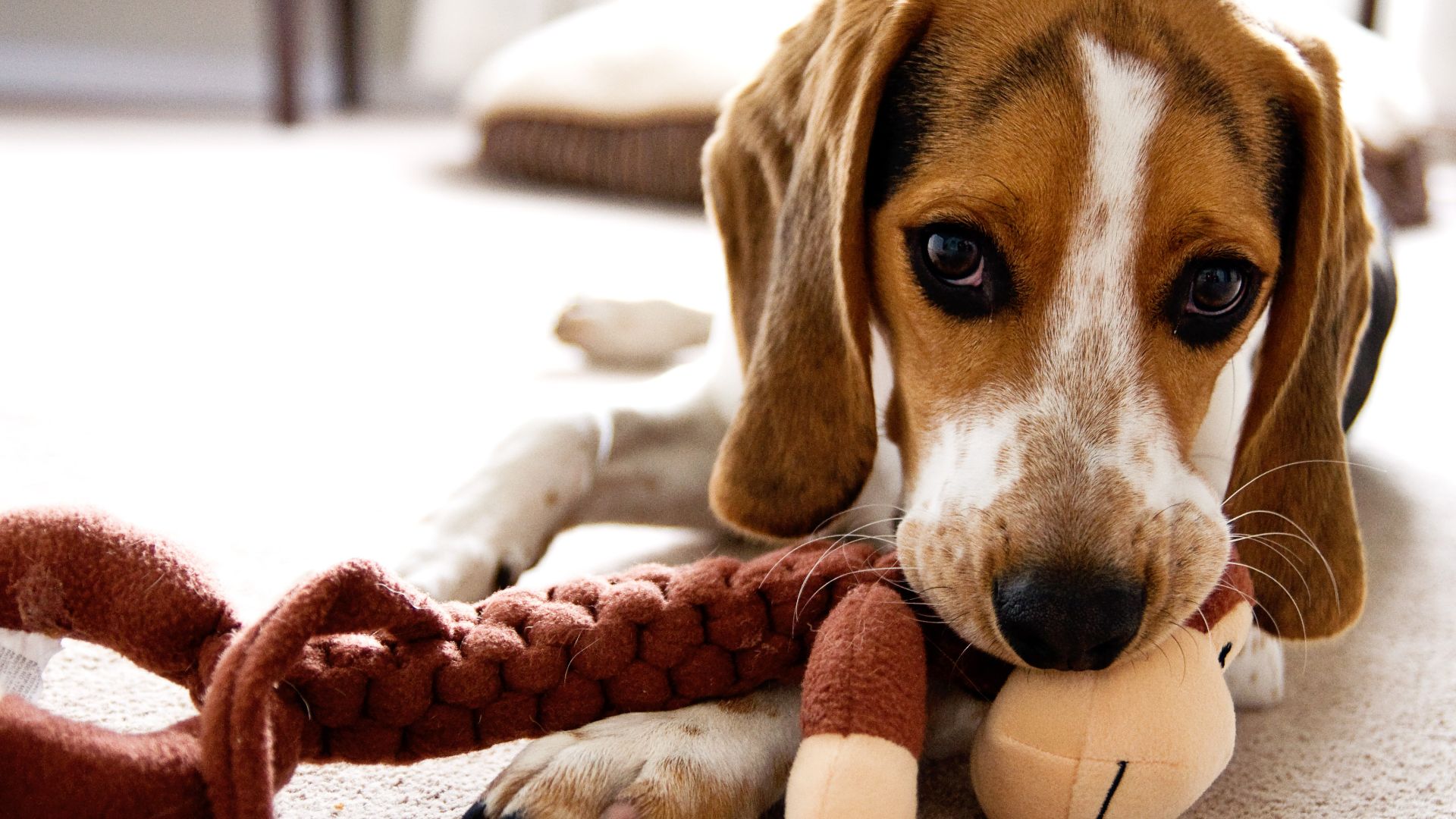
Playing with toys is generally a substitute for hunting – dogs get to practice the skills they would use for hunting, as well as release natural urges. Playing is a common way for all young animals, including humans, to learn and practice important behaviors for survival. While nobody knows for sure, most experts agree that dogs shake their toys as part of an instinctual predatory behavior.
Dogs are predators by nature. They’ll catch and kill small to medium-sized animals, such as mice, rats, rabbits, lizards, and even cats, if they get a chance. While mice and other tiny mammals are usually dispatched quickly with a bite, larger animals are unlikely to be killed quickly enough just by biting. Not only this, but rats, cats, and lizards can give a nasty bite if not killed quickly. Instead, dogs have developed the ‘killing shake’. This violent shake should break their prey’s neck or back, delivering a quick kill.
They’re acting on an instinct to kill. But do dogs think they are killing their toys? It’s more likely that they’re using the toy as a substitute to practice and finesse the move. They may not be aware of this instinctual need to rehearse a kill, it just comes naturally to them to shake their toys after a period of play.
Why do some breeds shake their toys more than others?
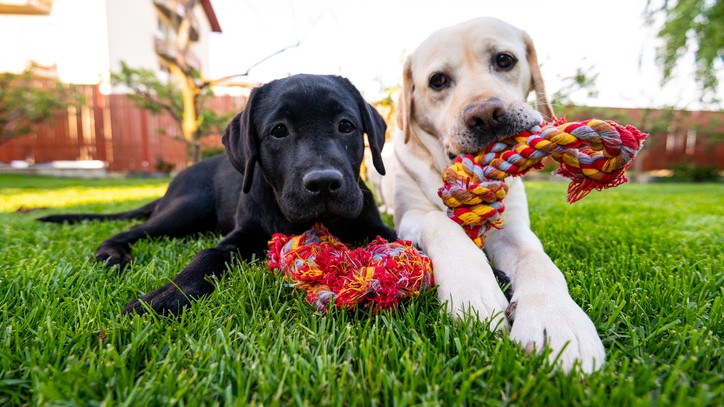
If you’re reading this because you’re wondering, why do dogs shake their toys, the chances are high that you own one of a number of breeds known for toy shaking, such as a terrier breed. It’s far less likely that you have a labrador retriever, despite them being a very popular breed. So which breeds tend to shake their toys more, and why?
Get the best advice, tips and top tech for your beloved Pets
Any breeds in the terrier group are very likely to shake their toys. These dogs have been bred to hunt and kill vermin, so it makes sense that their killing instinct is a lot stronger than many other breeds. Jack Russells, for instance, are still used to control rats on farms – they can burrow into small spaces, and have lightning-quick reflexes to catch their prey, making them one of the best farm dogs. Over the years, dogs that are better at killing would have been bred from, resulting in very strong shake-to-kill instincts that are present even in pet dogs.
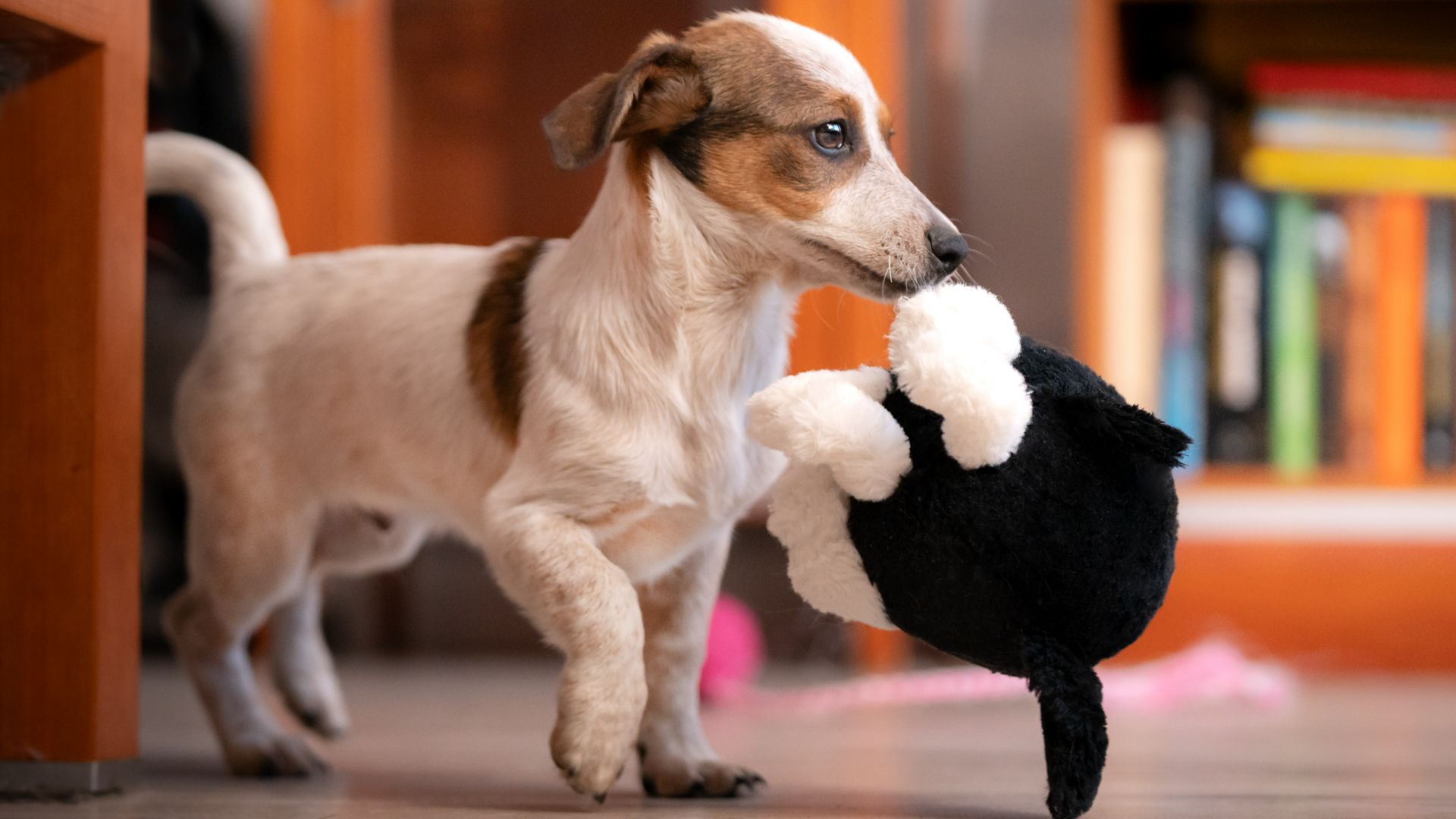
On the other hand, gundog breeds rarely shake their toys. These dogs have usually been bred to have a ‘soft mouth’. After all, you wouldn’t want your recently-shot pheasant to be bruised and battered with an over-enthusiastic shake. While any dog could be trained not to shake, centuries of breeding dogs that are gentle with their retrieve (and by extension, their toys) has led to an instinctual shift away from killing, and towards gentle carrying. Did you know a Spaniel breed can gently carry around a hen’s egg around in their mouth all day, never cracking the shell?
Of course, many dog breeds have a purpose that doesn’t fit neatly into the ‘groups’ of the kennel club. If your dog is a keen shaker, look up their breed history, and see if there’s a good reason why. For crossbreeds and designer breeds, consider their parent breed histories. But remember, all dogs are individual. Their personalities and early life experiences can help explain why some dogs shake their toys, while others do not.
Is it okay for dogs to shake their toys?
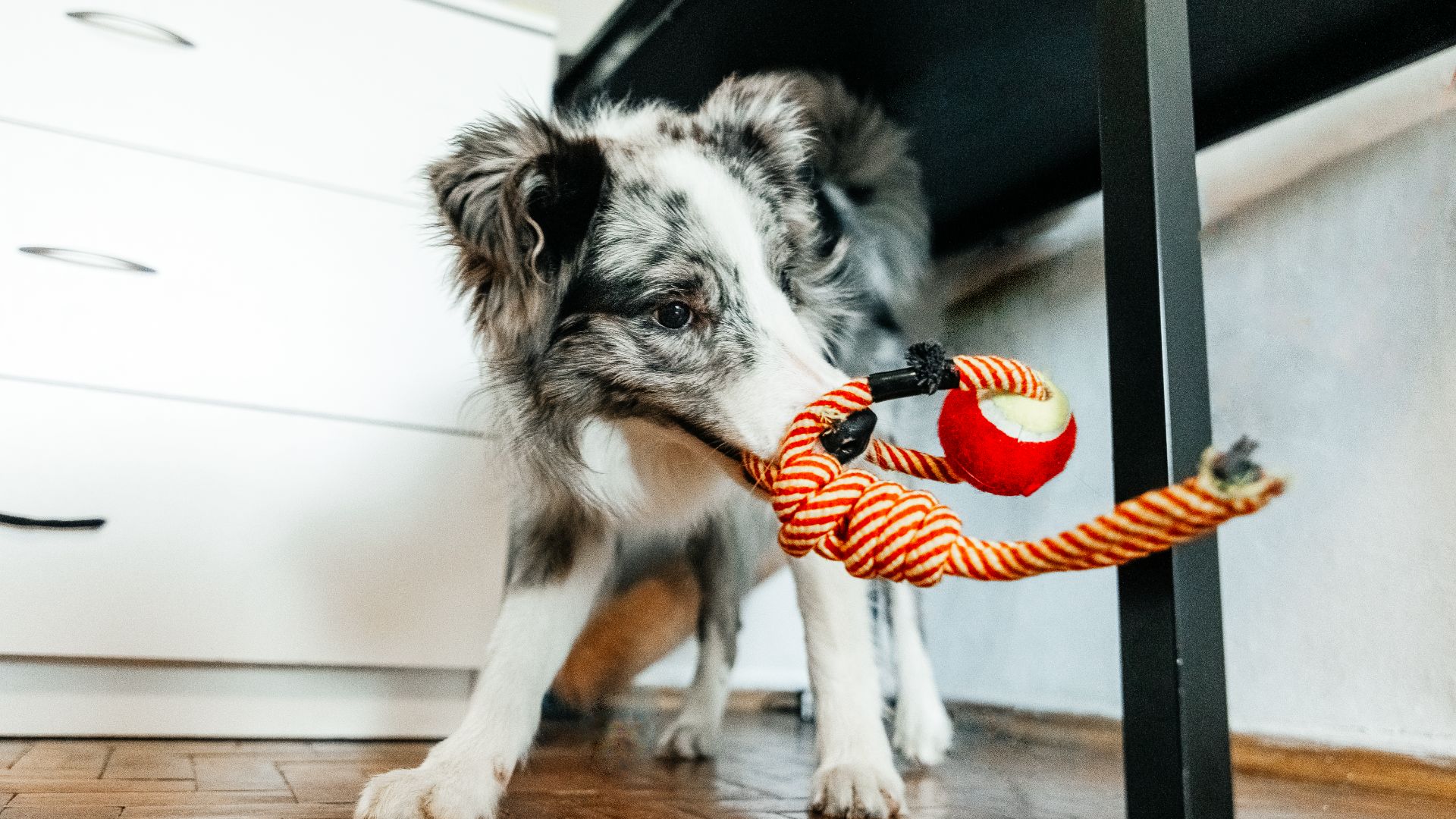
If you’re wondering, is it ok for dogs to shake their toys, the good news is that it is completely normal behavior for dogs. As long as it isn’t harming anyone, it doesn’t need to be discouraged. In fact, allowing dogs to display natural behaviors is one of the ‘five freedoms’, and is just one way to improve your relationship with your dog.
However, there are some times when you may need to stop your dog from shaking their toys. The first is a training issue. As puppies, many dogs will shake their toys. The longer and flappier, the more fun they seem to be to shake. The problem comes when it’s a child’s toy, a favorite shoe, or another object your dog shouldn’t have. In this case, consider teaching your pup a ‘drop it’ command in order to retrieve the item without a chase. You’ll need to then help your dog learn which items he is allowed to play with, and which he isn’t.
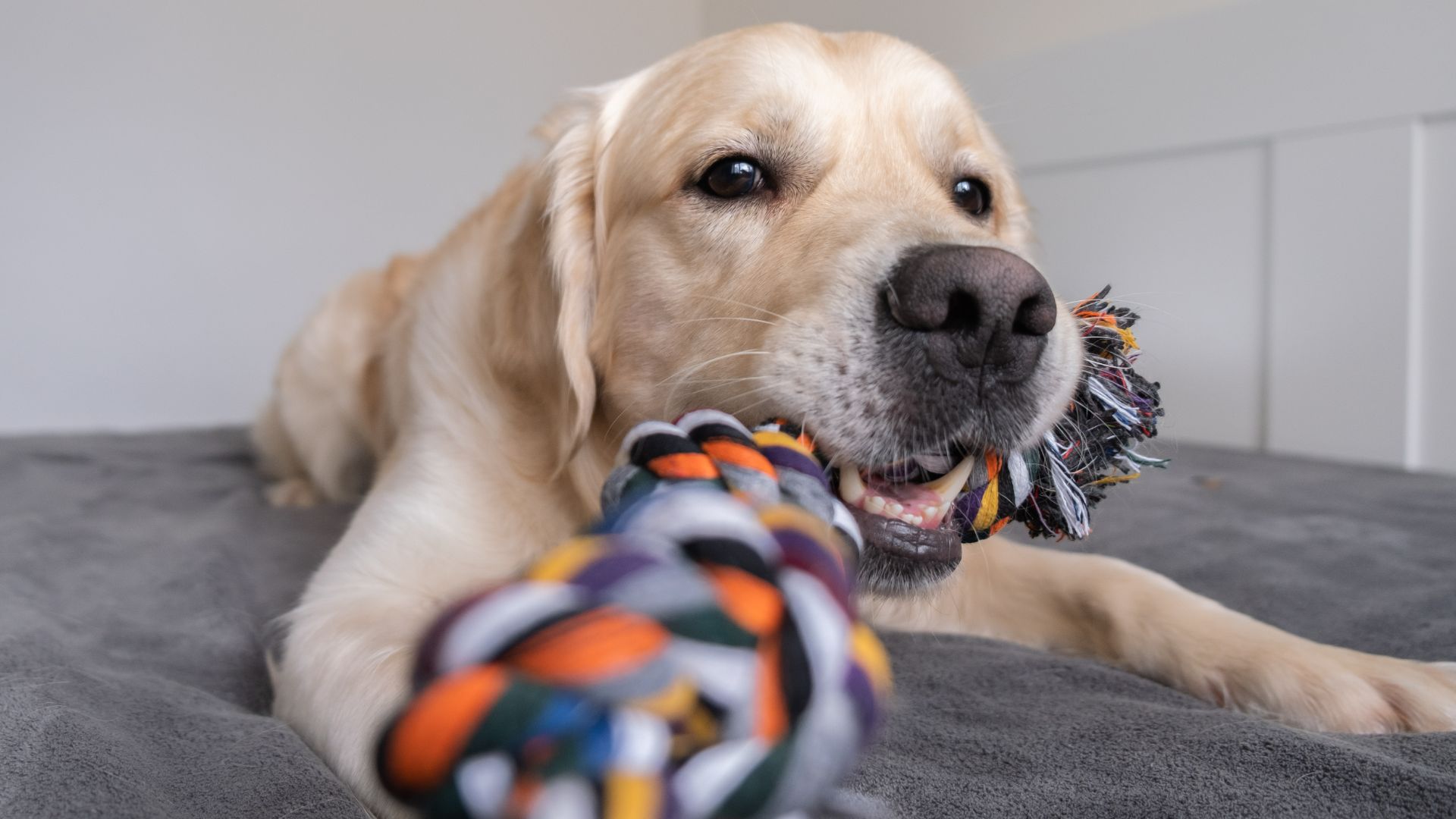
Another time you may need to stop your dog shaking his toys is if he has a medical condition. Ear problems, jaw problems, and bad backs could all be worsened by vigorous toy shaking, so it may be that you need to discourage this behavior in some dogs.
Lastly, don’t forget that damaged toys can be dangerous to dogs. Supervise your pup when playing, and regularly inspect toys for damage, removing any that have loose parts or where the stuffing is falling out. Try rotating dog toys into a cupboard so there’s always something ‘new’ to play with.
If you found this helpful you may want to check out our guide to the Best durable dog toys.
After graduating as a vet from the University of Nottingham in 2016, Dr. Joanna Woodnutt went on to practice companion animal medicine in the Midlands. She quickly developed a love of consulting and helping clients with medical problems such as dermatology, behavior and nutrition - anything that involved helping clients understand their pets better.
Jo started writing about pet health in 2017, realizing that it meant she could help even more pet parents. Since then, she has written for countless online and print publications and is a regular contributor for Edition Dog Magazine. Jo is the director of The Veterinary Content Company, which she founded in 2020. She is also the founder of Petlearnia, a platform that provides pet e-learning courses for pet parents.
Jo now lives in the Channel Islands with her husband Ian and terrier Pixie.

